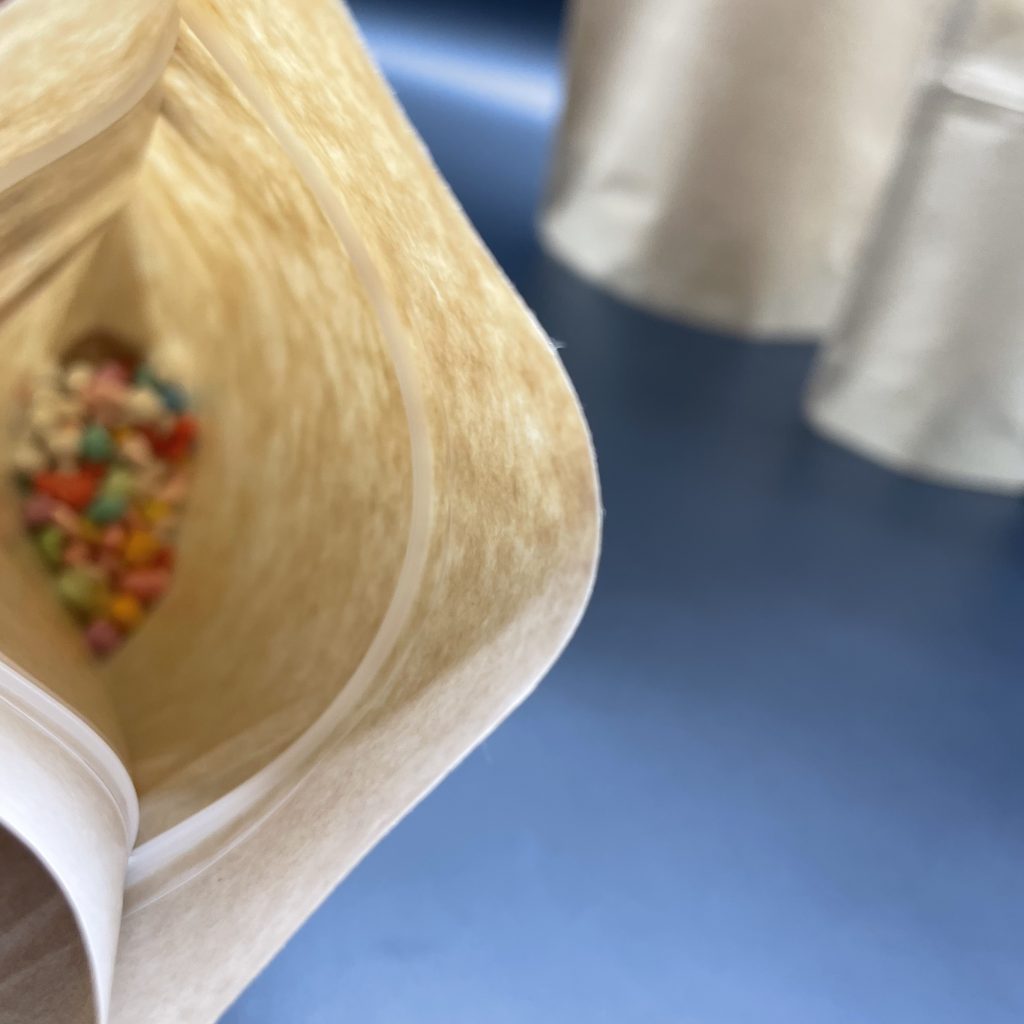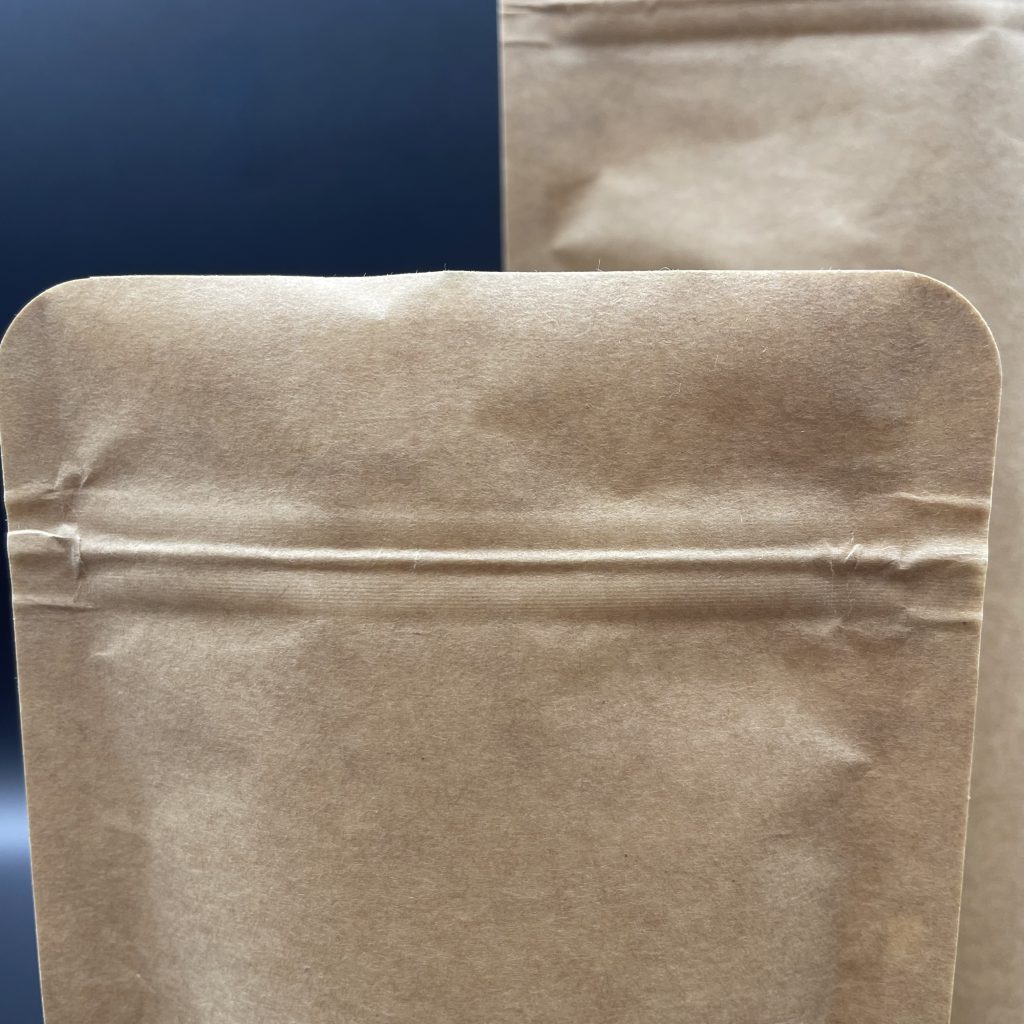Eco Friendly Stand Up Pouch: The Vanguard of Plastic Packaging’s Sustainable Transformation
In an era where sustainability intersects with consumer demand, the eco friendly stand up pouch has emerged as a catalyst for change across the flexible packaging landscape. These vertically stable solutions are redefining industry standards, challenging traditional plastic packaging bag conventions, and proving that environmental responsibility need not compromise functionality or shelf appeal. As global regulations tighten and conscious consumers multiply, this evolution marks a pivotal shift toward circularity.

Material Science Revolution
The transformation begins at the molecular level:
Mono-Material Dominance: Brands now favor single-polymer structures (e.g., all-PE or PP) that enable true recyclability. Nestlé’s YES! snack bars use 100% PE eco friendly stand up pouches, compatible with store drop-off streams.
PCR Integration: Post-consumer recycled content now comprises up to 50% of premium pouches. Lavazza’s coffee line incorporates ocean-bound plastics without sacrificing barrier properties.
Compostable Hybrids: Plant-based PLA layers merge with traditional films for partial biodegradability. Tipa’s breakthrough allows plastic packaging bag components to decompose in 12 weeks.

Smart Logistics & Design Efficiency
The eco friendly stand up pouch delivers unexpected supply chain advantages:
| Feature | Impact | Brand Application |
|---|---|---|
| 40% lighter weight | 35% lower transport emissions | P&G’s Tide detergent refills |
| Compact pre-fill form | 2× more units per pallet | Siete Grain-Free Chips |
| Integrated dispenser | Reduces product waste by 22% | Maple Hill creamer pouches |
These innovations stem from reimagining traditional plastic packaging bag logistics—turning shipping efficiency into carbon reduction.

Regulatory Catalysts Accelerating Adoption
Global policies are eliminating ambiguity:
EU PPWR (2025): Mandates 70% recyclability, banning multi-material laminates
California SB 54: Imposes $50k/day fines for non-compliant packaging post-2032
India’s EPR Rules: Require 30% PCR usage in flexible packaging
Brands like Unilever report 40% lower compliance costs after transitioning to mono-material eco friendly stand up pouch systems versus complex alternatives.

Consumer-Centric Innovation
Modern pouches balance sustainability with experience:
QR-Enabled Storytelling: Scan-to-reveal blockchain journeys (e.g., Farmer Direct Co-op’s seed-to-pouch transparency)
Freshness Guardians: Oxygen-absorbing panels in Sidekick pet food pouches extend shelf life 50%
Self-Healing Films: BASF’s nanocoatings repair punctures—critical for e-commerce
The plastic packaging bag evolves from passive container to active preservation partner.
The Infrastructure Challenge & Solutions
Despite advances, recycling rates linger below 25%. Pioneering responses include:
-
Detachable Components: Scholle IPN’s zippers separate pre-recycling
-
Chemical Tracers: Ampacet’s markers enable automated sorting of PCR-rich films
-
Retail Take-Back: TerraCycle/Target partnerships accept used pouches in-store
Future Horizons: Beyond 2025
-
Edible Barriers: Notpla’s seaweed coatings dissolve upon first use
-
Phase-Change Materials: Tempra’s self-chilling pouches for meal kits
-
Digital Twins: IoT sensors monitoring pouch conditions in real-time
The eco friendly stand up pouch will soon integrate AI-driven lifecycle assessments—printing carbon footprints directly on packs.
Conclusion: The Vertical Advantage
The eco friendly stand up pouch represents more than packaging—it embodies industry accountability. As material innovations merge with smart technology, these pouches transform from waste generators to circular assets. For brands hesitating at the sustainability threshold, the message is clear: The future of plastic packaging bag solutions stands tall, recyclable, and regenerated.
Those who innovate vertically today will lead markets tomorrow.
You can visit our website to know more about our flexible packaging pouch:
